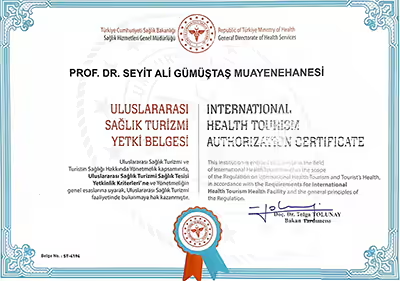FOLLOW-UP AND MONITORING AFTER BONE AND SOFT TISSUE TUMOR SURGERIES
- Hits: 694
Postoperative follow-up and monitoring begins when the patient wakes up on the operating table. Particularly in vascular or nerve surgery, blood flow to the extremity and function of the associated nerve are checked before the patient is moved from the operating table.
The patient is admitted to the ward and routine monitoring (blood pressure, pulse, fever, etc.) is performed. Circulatory monitoring is continued at certain intervals depending on the surgery performed. Medication (painkillers, blood thinners, antacids, antibiotics, serum, etc.) to be taken by the patient is arranged by us.

The operated limb (arm or leg) is positioned appropriately (e.g. elevated). In appropriate patients, ice is applied to the wound area at regular intervals for a period of time. This is done to reduce swelling, bleeding, and pain. Depending on the type of surgery performed, the patient is dressed on the 1st-3rd day after surgery. If a drain (blood collection device placed in the surgical area) is placed, the amount of blood drained daily is monitored. If the daily amount of blood or fluid (seroma) falls below a certain level, it will be removed.
In-bed exercises should be started immediately. This is particularly important to reduce the risk of developing a thrombus/embolism. In addition, appropriate in-bed muscle strengthening exercises are started. Patients should be able to walk as soon as possible. Single or double crutches may be used, depending on the operation. Whether the patient steps on their foot when walking, or how much weight they put on when walking, can vary depending on the surgery performed, and patients are informed of this and made sure to walk accordingly.
How long a patient stays in hospital after surgery depends on the type of surgery performed, the patient’s general condition and whether any complications (wound problems, etc.) develop. It is important that patients are discharged as soon as possible, particularly in view of the risk of nosocomial infection.
The discharged patient is given a prescription, told how often to reapply the dressing, what exercises to do and when to return for a check-up. The patient is given our contact number so that we can be contacted in the event of an unexpected problem or if they have any questions or need information.
Early post-operative outpatient clinic visits are focused on wound healing. Once the wound has healed, the patient is referred to the appropriate physician for professional physical therapy, if needed.
After the wound has healed, the follow-up intervals and necessary examinations (X-ray, MRI, CT scan, PET-CT, etc.) vary depending on the patient’s diagnosis and the surgery performed. Follow-up visits are more frequent, especially in the first 2-3 years. Follow-up intervals are usually 3 months, then 6 months, one year, and two years.

